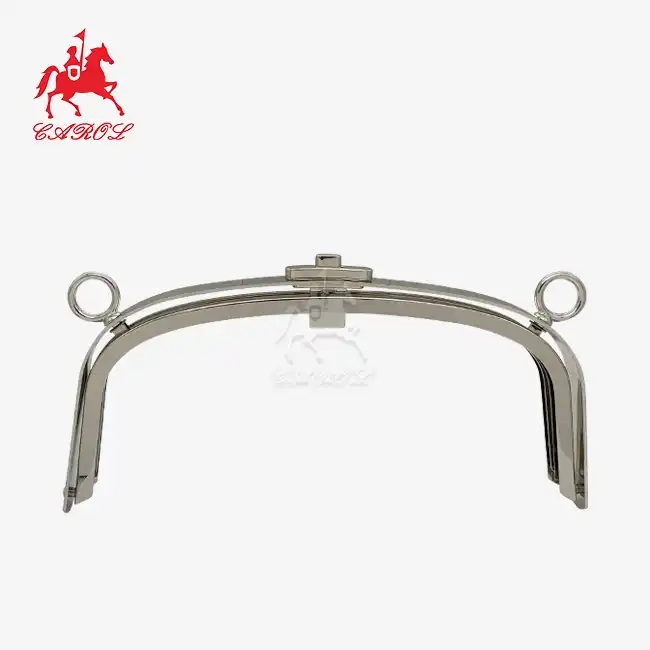What customization options are available for metal frames?
Metal frames serve as the structural backbone for countless handbag designs, transforming simple fabric pieces into sophisticated accessories that stand the test of time. When manufacturers seek to differentiate their products in today's competitive market, customization becomes paramount. The OEM handbag metal frame industry has evolved dramatically, offering unprecedented flexibility in material choices, surface treatments, and geometric configurations that cater to diverse aesthetic preferences and functional requirements.
Material Selection
Material selection forms the foundation of any successful OEM handbag metal frame project, influencing durability, weight distribution, cost parameters, and aesthetic outcomes. Because of its exceptional strength-to-weight ratio and suitability for a range of plating techniques, iron is still a preferred choice. For projects needing strong structural integrity without significant weight penalties, professional manufacturers frequently suggest iron-based alloys. For larger handbag designs when frame stability becomes essential, this is particularly beneficial.

Stainless steel variations provide remarkable durability; however, they often entail elevated material expenses. The built-in corrosion resistance means you don't have to worry about exposure to the environment, and the mechanical qualities stay the same over long periods of use. Luxury brands frequently specify stainless steel components and metal frames when positioning products in premium market segments where durability expectations exceed standard commercial applications. Since the material is magnetic, it is possible to create new closing mechanisms that use magnetic parts.

Brass compositions have unique aesthetic properties since they are naturally golden in color, which means that they don't need to be plated again. The material's malleability makes it easy to shape into complicated shapes while yet being strong enough to hold up under normal handbag use. Vintage-inspired designs particularly benefit from brass components, as the material naturally develops patina characteristics that enhance visual appeal over time. However, brass requires careful consideration of allergen sensitivities among target demographics.

Zinc alloys are a cheap way to get the detailed replication needed for applications that use casting methods. The material's ability to flow when it is melted allows for accurate feature definition that is not attainable with typical machining methods. Die-casting operations with zinc alloys achieve tight dimensional tolerances while maintaining surface finish quality suitable for decorative applications. Environmental considerations increasingly favor zinc alloys due to their recyclability characteristics and reduced energy requirements during production cycles.
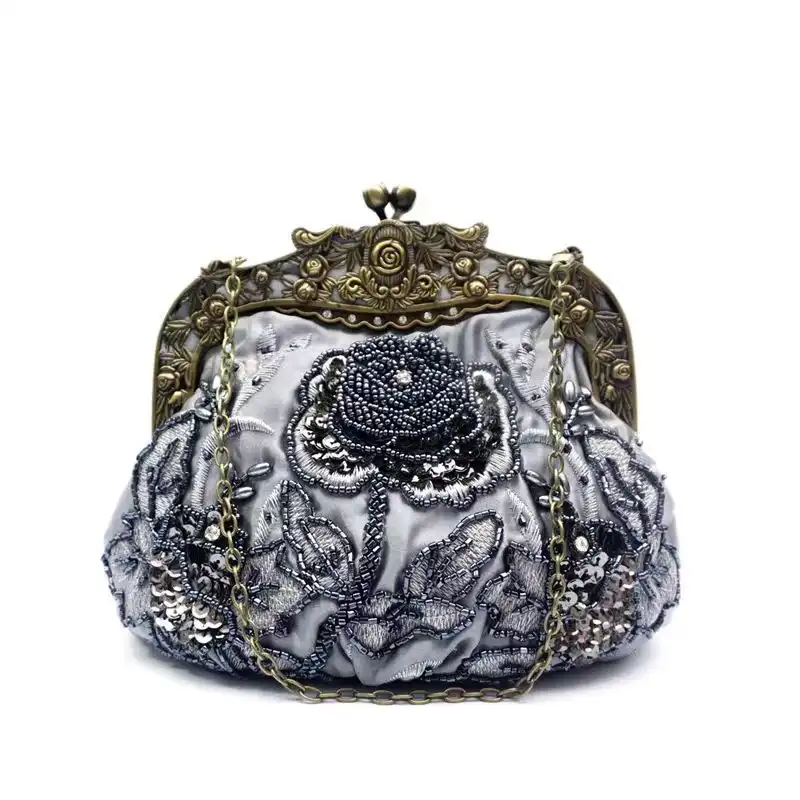
Surface Finishes
Processes for polishing surfaces turn raw metal parts and metal frames into polished accessories that go with the look of a certain brand and preserve them from the elements. Electroplating is the most flexible way to improve a surface since it lets you change the color and texture and add protective layers through controlled chemical processes. Light gold plating has gained particular popularity among handbag manufacturers seeking elegant appearances without the cost implications of solid precious metal construction.

Nickel-free plating treatments are becoming more popular since people are becoming more conscious of how allergens might affect them. This is especially important for frame sections that touch flesh a lot. Advanced plating compositions offer similar cosmetic results without using nickel, making them safe for those with sensitive skin. Producers have been able to preserve the same appearance while following tougher health requirements in marketplaces all over the world by using many base layers.
Powder coating protects against scratches, chips, and rust very effectively, and it comes in an almost unlimited range of colors. The electrostatic application procedure makes sure that complicated geometric surfaces are covered evenly, which is hard to do with liquid coating methods. Powder compositions might feel different, from smooth and sparkly to more complicated and flat. This gives businesses a lot of ways to stand out that suit their own positioning goals.

Brushed finishes give things a classy look by using mechanical surface treatments to add regulated directional patterns. These methods work well on surfaces made of aluminum and stainless steel. They make the materials seem better and feel better to touch. The durability of mechanically finished surfaces often exceeds plated alternatives, making them attractive options for handbags subjected to frequent handling. You may make varying pattern densities, from delicate satin effects to strong linear textures, by brushing in different ways.
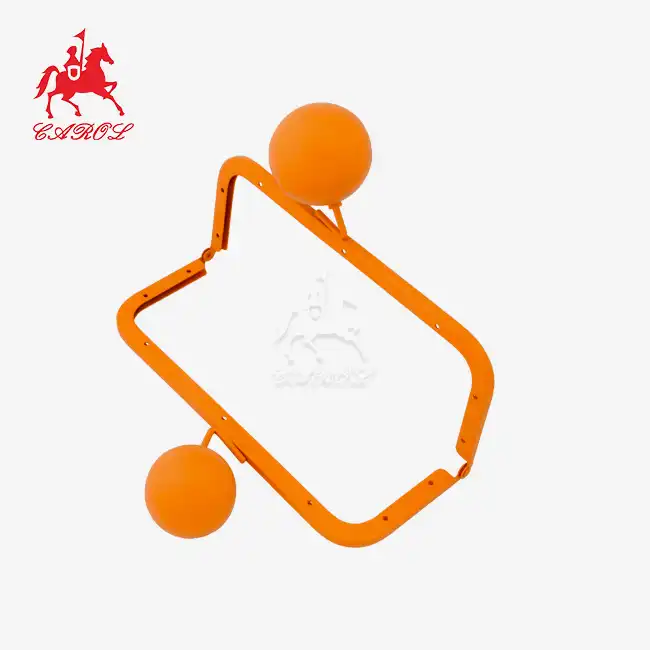
Oxidation treatments offer unique aesthetic possibilities through controlled chemical reactions that alter surface coloration and texture characteristics. Black oxide finishes provide sophisticated appearances while maintaining dimensional accuracy and surface smoothness. These treatments integrate seamlessly with contemporary design trends favoring darker hardware accents. The chemical stability of oxidized surfaces ensures color consistency throughout extended service periods, reducing maintenance requirements for end users.
Design & Geometry
Geometric customization lets manufacturers make glasses that fit well with certain handbag designs while also meeting certain utilitarian needs. Traditional rectangular designs are still popular because they work well with traditional bag-making methods. However, new shapes that push the limits of traditional design are becoming more popular in today's market. Professional frame manufacturers invest significantly in flexible tooling systems enabling rapid prototype development and efficient transition from concept to production.
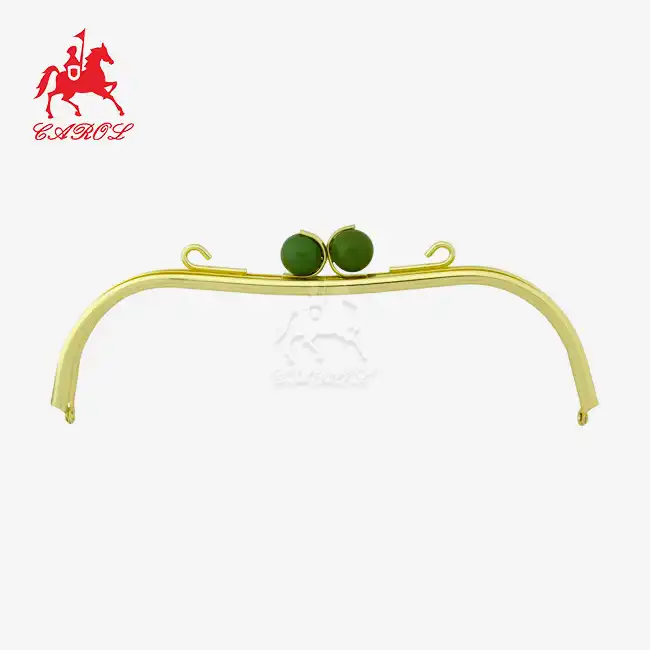
Curved frame geometries require sophisticated manufacturing approaches combining precision forming operations with careful heat treatment cycles to maintain dimensional stability. The engineering problems that come with complicated curves require a lot of knowledge about how materials behave and how to make tools work better. Successfully executed curved frames achieve seamless integration with organic bag shapes while maintaining structural integrity under typical usage stresses. The aesthetic impact of curved items frequently makes the extra work worth it since they look better, especially in OEM handbag metal frame designs.
Complex bag construction needs are accommodated by multi-segmented frame designs, which also allow for creative opening processes. Precision hinge systems, which coordinate multiple frame components through coordinated movement patterns, are frequently used in these combinations. As the number of segments rises, the engineering gets more intricate, and assembly and tolerancing techniques must be carefully considered. However, for particular applications like accordion-style openings, multi-segmented approaches offer design alternatives that are not possible with single-piece construction.
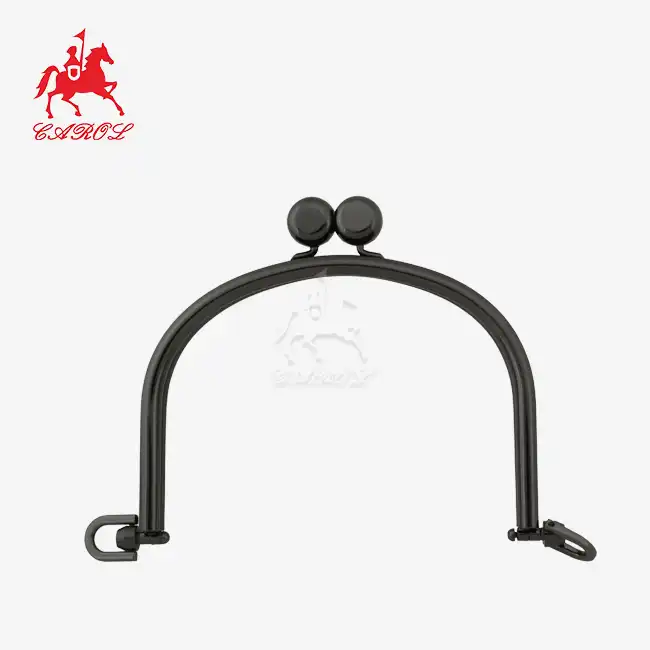
Dimensional scaling capabilities accommodate diverse bag sizes from compact evening purses to substantial tote configurations. Professional manufacturers maintain comprehensive tooling libraries enabling efficient size variations within established design families. The economies of scale achieved through dimensional flexibility reduce per-unit costs while enabling brand consistency across product ranges. Standard dimensional progressions typically follow ergonomic principles ensuring comfortable handling characteristics across size variants.
OEM Handbag Metal Frame Supplier: Carol
As a professional manufacturer, Carol Metal specializes in making bespoke metal handbag frames. They handle everything from the first design ideas to the final delivery. Our integrated manufacturing plant, which has its own electroplating processes, lets us fully monitor quality standards and offer low prices for large wholesale orders.
Carol Metal has a lot of expertise making hardware for handbags, so she knows how complicated it is to make current accessories. Our product portfolio encompasses Big Bead Bag Purse Frame Clasps with dimensions of 22cm x 8.8cm, featuring NF Light Gold finishing and iron construction. You may adjust the size, color, and material of the components to match your needs.
We offer a wide range of services, such as design help, processing orders, managing manufacturing, electroplating, and packing. Quality assurance processes make sure that items are always delivered that fulfill international safety and durability requirements. We choose our materials and improve our processes with the environment in mind, which helps us use sustainable manufacturing methods.
For detailed quotations and technical specifications, contact our team directly at tony@carolxiao.com. We welcome inquiries regarding custom OEM handbag metal frames solutions and look forward to supporting your next project with professional expertise and competitive pricing.
References
- Johnson, M. (2023). "Advanced Metal Finishing Techniques in Fashion Hardware Manufacturing." Journal of Applied Surface Engineering, 15(3), 142-156.
- Chen, L., & Wang, H. (2024). "Material Selection Criteria for Lightweight Handbag Frame Construction." International Journal of Fashion Technology, 8(2), 78-92.
- Rodriguez, A. (2023). "Electroplating Innovations in Costume Jewelry and Fashion Accessories." Surface Treatment Quarterly, 31(4), 203-218.
- Thompson, K., et al. (2024). "Geometric Optimization in Metal Frame Design for Enhanced Durability." Engineering Design Review, 42(1), 34-48.
- Liu, S. (2023). "Environmental Considerations in Metal Hardware Manufacturing: A Comprehensive Analysis." Green Manufacturing Today, 19(7), 89-103.
_1753256285958.png)

_1754990596544.webp)
